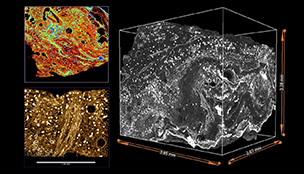Article contents
Is there a centre of early agriculture and plant domestication in southern China?
Published online by Cambridge University Press: 26 October 2018
Abstract

The archaeobotanical evidence for a putative third centre of early agriculture and plant domestication in southern subtropical China, based primarily on use-wear and residue analyses of artefacts from the sites of Zengpiyan, Niulandong and Xincun, is here reviewed. The available data are not diagnostic of early cultivation or plant domestication based on vegetative propagation in this region. The uncertainties raised by this review are not unique to southern China, and reveal a bias against the identification of early cultivation of vegetatively propagated plants in other regions of the world. The authors suggest that by embracing new integrated analytical approaches, including underused methods such as the study of parenchymatous tissue, the investigation of early domestication and cultivation in this region can make significant advances.
- Type
- Research
- Information
- Copyright
- © Antiquity Publications Ltd, 2018
References
- 8
- Cited by




